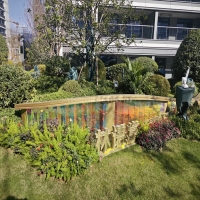Welcome to the website for landscape facilities products and knowledge.
How does the table’s design address the challenges of multi-generational or diverse workforces?
Contemporary office table design has evolved into a strategic solution for harmonizing multi-generational and diverse workforces. The fundamental challenge lies in accommodating varying physical needs, technological preferences, and collaborative styles across different age groups and cultural backgrounds.
Modern tables address physical diversity through innovative ergonomic features. Height-adjustable mechanisms accommodate both standing enthusiasts and traditional seated workers, while curved edges and accessible leg spaces welcome employees of all mobility levels. These designs consciously eliminate physical barriers that might unconsciously exclude certain demographic groups.
Technology integration forms another critical dimension. Tables now incorporate universal charging ports compatible with both legacy devices and modern equipment, alongside discreet cable management systems that maintain aesthetic appeal while serving digital natives and analog preferences equally. This technological democratization prevents generational friction during collaborative sessions.
The spatial configuration of modern tables demonstrates particular sophistication. Modular designs with reconfigurable components allow teams to create intimate brainstorming circles or formal presentation setups within minutes. Such flexibility respects different communication styles - whether baby boomers prefer structured meetings or millennials thrive in spontaneous huddles.
Material selection psychologically impacts cross-generational dynamics. Warm wood finishes may provide comfort to traditional workers, while sleek glass and metal elements appeal to younger professionals. The most successful designs blend these materials to create environments where all generations feel visually represented and valued.
Acoustic considerations reflect generational sensitivity. Integrated sound-absorbing materials and strategic privacy screens acknowledge that open-plan layouts can overwhelm experienced workers accustomed to private offices while still maintaining the transparency younger employees prefer.
These design elements collectively create tables that function as neutral territories where diverse work approaches can coexist productively. The physical furniture becomes an active participant in organizational culture, signaling that every work style holds merit and that the organization invests in infrastructure supporting all employees equally.
The true measure of these designs emerges in daily use - when a Gen Z consultant effortlessly connects their tablet to a shared display while a Baby Boomer executive adjusts the height for comfortable seated discussion, both finding equal support from the same surface. This represents the ultimate success: furniture that disappears into the background while foregrounding human collaboration across all divides.
Related search:

Recommendation
Metal and acrylic color-changing combined curtain wall for large-scale public landscape facilities